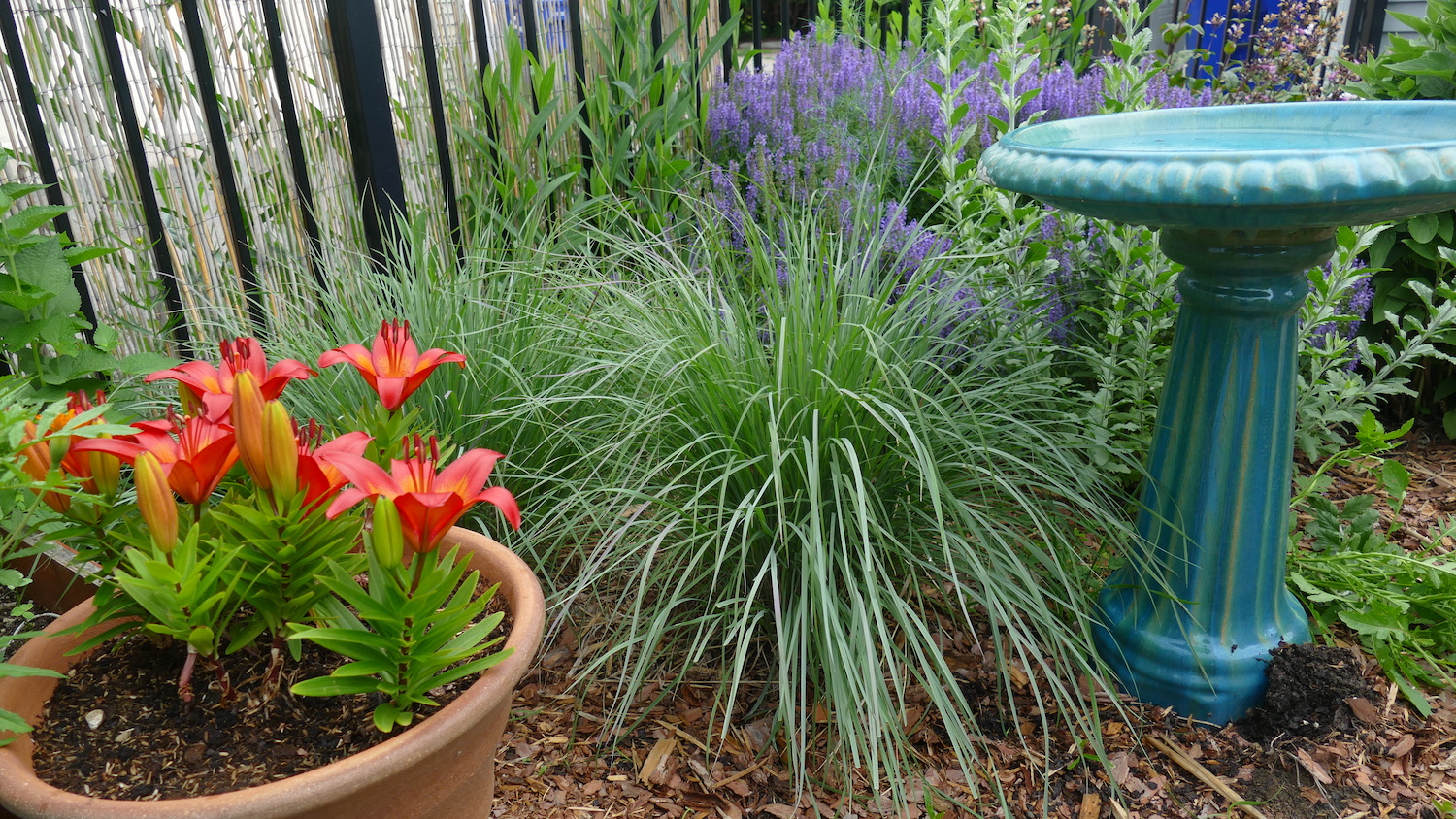Plant Profile: Little Bluestem
Ornamental grasses of all kinds look at home in northern gardens. Their swaying seed heads in late summer remind us of the prairie past of much of Minnesota and the Dakotas. While I like many ornamental grasses, my latest favorite is little bluestem.
Little bluestem (Schizachyrium scoparium) is a native plant with a range that includes most of the continental United States (except for Nevada and Washington) and the southern tier of Canada. As you can guess from its wide range, little bluestem is incredibly adaptable. It can grow in USDA Zone 3 of northern Minnesota and as far south as Florida. It does fine in sandy soils as well as those with a clay-loam texture. It can handle drought very well and it doesn’t object too much if the site is wet.

Little bluestem has become more popular with home gardeners in the past couple of decades as more people are coming to embrace native plants. It also looks great in a home garden. In late spring (sometimes very late), it emerges with shimmery blue-green leaves. These grow to 2 feet or so tall in compact clumps. Later in the season, the grass sends up seed stalks, which are a rosy pink color and brighten up the fall garden. Little bluestem may droop a bit under winter snows, but I leave mine standing until spring.
Good for Wildlife
This grass attracts many types of beneficial insects and is the larval host of nine skipper butterflies. The seeds of little bluestem are also eaten by songbirds, and it’s a delight to see a small bird swaying on the delicate stalks as it gathers nourishment from the plants.
To avoid drooping or lodging (when a plant falls over), do not over fertilize little bluestem. It does not need it and too much nitrogen hurts the plant! It grows best in full sun and may be more prone to falling over in shade.
New Cultivars
As it has grown more popular, new cultivars have been introduced. Many Minnesota gardeners are familiar with Little Heaven™ little bluestem, developed by University of Minnesota horticulturist Mary Meyer. This cultivar grows up to 4 feet tall and turns burgundy to pink in the fall. (This is the one I grow.)
If you’d like a shorter cultivar, consider ‘Jazz’ or ‘Prairie Munchkin’, which are both under 3 feet tall with a narrow habit. Another popular cultivar is called ‘Prairie Blues’. Its fall color leans more toward purple and orange than other varieties and it looks great planted in a grouping.
Whether you choose the native species or a cultivar, little bluestem fits perfectly in a northern gardens.

Thank you for this post. I am planning a large pollinator garden and plan to use a lot of the native variety or possibly the Prairie Blues cultivar. I will need quite a lot and am interested in seed scourges. I became a fan when my oldest son moved from home in North central Montana to Southeastern MT where I saw it on dry hills as well as road ditches. After frost the whole clump turn beautiful burgundy, then fades to a bright orange. It is commonly 12 to 18 inches tall there I assume because of the dry climate. I am hoping for the shorter stature so as not to hide the gardens further back on the lot were the soil is good and watering more practical.
Where can you find Little Heaven littlebluestem?.
You should be able to find it at any good garden center or nursery. Many nurseries have been swamped with customers this year, so you might want to call ahead to see if they have it in stock.
Are the cultivars successful in attracting pollinators? I have always been told they are less effective than the true native plant.
The answer to that question isn’t clear. There is some ongoing research on natives vs. native cultivars (I’ll put a link below) that seems to argue the closer a plant is to the native in appearance, the more attractive it is to pollinators. We’ll be looking into this more over the next few months for an article in one of the 2021 issues of Northern Gardener. http://www.indefenseofplants.com/blog/2018/2/6/mt-cuba-center-puts-nativars-to-the-test